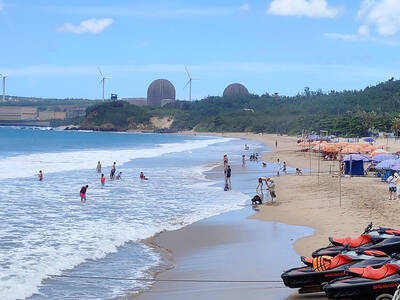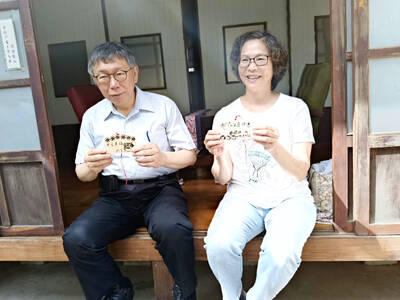How will this age be remembered? After the stone age, the bronze age, the steam age and the information age, what material or innovation will most define the current era? According to a new exhibition at the Design Museum, the most ubiquitous hallmark of the Anthropocene is not a gamechanging material, nor the mastery of technology. It’s trash.
“We are arguably living in the waste age,” says Justin McGuirk, the London museum’s chief curator, who has spent the last three years rifling through rubbish with co-curator Gemma Curtin to put together this timely show. “The production of waste is absolutely central to our way of life, a fundamental part of how the global economy operates. We wanted to show how design is deeply complicit in the waste problem — and also best placed to address it.”
Opening on the eve of the Cop26 climate summit, Waste Age is a powerful wake-up call, not so much to consumers, but to the manufacturers, retailers and, most crucially, government regulators. It is not intended to be a slap around the face for buying that takeaway coffee on your way to the museum, or forgetting your cotton tote bag yet again, but an eye-opening look at the sheer scale of the issue, and the people working on ingenious solutions.

Photo: Reuters
The exhibition begins with a useful reminder that we didn’t get here by accident. Humans are not inherently wasteful creatures. Throwaway culture was something we had to learn — indeed, it was a lifestyle choice, marketed from the mid-20th century onwards as a decadent release, following the austerity of wartime. It was the intentional opposite of “make do and mend.”
One advert from the 1960s extolls the wonders of the new-fangled polystyrene cup: “New and very in! The party ‘glass’ you just enjoy … and throw away.”
It hangs next to a plastic carrier bag from the 1980s, printed with descriptions of its many advantages over paper. Little did we know that, four decades later, the world would be consuming more than a million plastic bags a minute.

Photo: Reuters
Generating waste, the curators argue, has long been a primary engine of the economy. The history of the lightbulb is an illuminating case in point. In the 1920s, bulbs were so long-lasting that they were deemed commercially unviable. General Electric, Philips and others formed the Phoebus cartel in 1924 to standardize the life expectancy of lightbulbs at 1,000 hours — down from the previous 2,500 hours. And so the culture of planned obsolescence was born. Almost a century later, similar practices continue: last year Apple agreed to pay up to US$500 million, after it was accused of deliberately slowing down older phone models to encourage consumers to buy the latest handsets.
A striking installation by Ibrahim Mahama brings home the reality of where such defunct electronics end up. He has erected a giant wall of old TV monitors that play clips from Agbogbloshie in Ghana, for many years the world’s largest e-waste dump, where informal workers burn electrical cables to harvest the copper wire and other precious metals. Mahama has commissioned them to cast the salvaged metal in the form of TV screen surrounds, which frame footage showing this toxic process. The scenes are desperate, but the message is clear: waste is precious.
About 7 percent of the world’s gold supplies are trapped inside existing electronic devices, meaning that, according to some estimates, by 2080 the largest metal reserves will not be underground but in circulation as existing products. What’s more, one tonne of extracted gold ore yields 3g of gold, whereas recycling one tonne of mobile phones yields 300g. So waste dumps and landfill sites are the new resource-rich mines.

Photo: Reuters
“In many ways ‘waste’ is a category error,” says McGuirk. “It’s often perfectly good material that’s simply undervalued.”
The exhibition includes designers who are already working on what a future of “above-ground mining” might look like, exploring how objects and buildings can be dismantled and their parts reused. There is the work of pioneering Belgian group Rotor, a team of architects who set up a demolition company to carefully remove materials and components from buildings slated for the wrecking ball.
Their Brussels warehouse brims with everything from marble slabs to vintage lamps, the spoils of what they call “forestry in the city.” It is shown alongside the refurbishment projects of French architects Lacaton & Vassal, for whom demolition is “a waste of energy, a waste of material, a waste of history [and] an act of violence.”
At a time when global construction waste is set to double to 2.2 billion tonnes a year by 2025, their joint calls to re-use what we already have couldn’t be more urgent.
In the consumer goods sphere, the re-use cause is championed by the likes of iFixit, an online global repair platform that publishes free repair guides and sells spare parts and tools, like a screwdriver to disassemble the iPhone. It has been lobbying governments for repairability legislation since 2003, with some success. France is the first country in Europe to implement a Repairability Index, adopted in January, which requires manufacturers to provide clear information on the repairability of smartphones, laptops, washing machines, televisions and lawnmowers, and award their products scores out of 10. The iPhone 11 may include some recycled rare earth elements, but it got a repairability score of 4.5 out of 10.
The final section of the exhibition moves beyond fixing and recycling to imagine a “post-waste” world, where materials are grown rather than extracted. Design exhibition regulars might be familiar with the wonders of hempcrete or mycelium insulation, but this show includes a dazzling range of innovations, from water-soluble electronic circuit boards made of natural fibers, to “sea stone,” a concrete-like material made from crushed seashells. Also featured are Sony’s packaging made from bamboo and sugarcane (embossed rather than printed, to save ink waste), Notpla’s seaweed-based sachets for liquids and condiments, a polystyrene substitute made from sunflowers, and a new kind of leather made from coconut water — alongside things made from algae, corn husks and organic pulps of all kinds.
Such biodegradable solutions come with their own pitfalls: how many times have you thrown a plastic container in the recycling bin, before realizing it was actually compostable Vegware? And should it go in the compost bin or landfill? Behavior and expectations will have to adjust to meet the brave new bio-future.
“Our aesthetic sensibilities may have to adapt,” McGuirk writes in the exhibition catalog. “After nearly a century of appreciating the hard-smooth-shiny perfection of plastics, we may begin to embrace irregularity, imperfection, decay and decomposition.”
Your future organo-laptop might not overheat, slow down, or need its battery constantly replaced. But it might start to go moldy instead.

Nine Taiwanese nervously stand on an observation platform at Tokyo’s Haneda International Airport. It’s 9:20am on March 27, 1968, and they are awaiting the arrival of Liu Wen-ching (柳文卿), who is about to be deported back to Taiwan where he faces possible execution for his independence activities. As he is removed from a minibus, a tenth activist, Dai Tian-chao (戴天昭), jumps out of his hiding place and attacks the immigration officials — the nine other activists in tow — while urging Liu to make a run for it. But he’s pinned to the ground. Amid the commotion, Liu tries to

A dozen excited 10-year-olds are bouncing in their chairs. The small classroom’s walls are lined with racks of wetsuits and water equipment, and decorated with posters of turtles. But the students’ eyes are trained on their teacher, Tseng Ching-ming, describing the currents and sea conditions at nearby Banana Bay, where they’ll soon be going. “Today you have one mission: to take off your equipment and float in the water,” he says. Some of the kids grin, nervously. They don’t know it, but the students from Kenting-Eluan elementary school on Taiwan’s southernmost point, are rare among their peers and predecessors. Despite most of

A pig’s head sits atop a shelf, tufts of blonde hair sprouting from its taut scalp. Opposite, its chalky, wrinkled heart glows red in a bubbling vat of liquid, locks of thick dark hair and teeth scattered below. A giant screen shows the pig draped in a hospital gown. Is it dead? A surgeon inserts human teeth implants, then hair implants — beautifying the horrifyingly human-like animal. Chang Chen-shen (張辰申) calls Incarnation Project: Deviation Lovers “a satirical self-criticism, a critique on the fact that throughout our lives we’ve been instilled with ideas and things that don’t belong to us.” Chang

The resignation of Taiwan People’s Party (TPP) co-founder Ko Wen-je (柯文哲) as party chair on Jan. 1 has led to an interesting battle between two leading party figures, Huang Kuo-chang (黃國昌) and Tsai Pi-ru (蔡壁如). For years the party has been a one-man show, but with Ko being held incommunicado while on trial for corruption, the new chair’s leadership could be make or break for the young party. Not only are the two very different in style, their backgrounds are very different. Tsai is a co-founder of the TPP and has been with Ko from the very beginning. Huang has